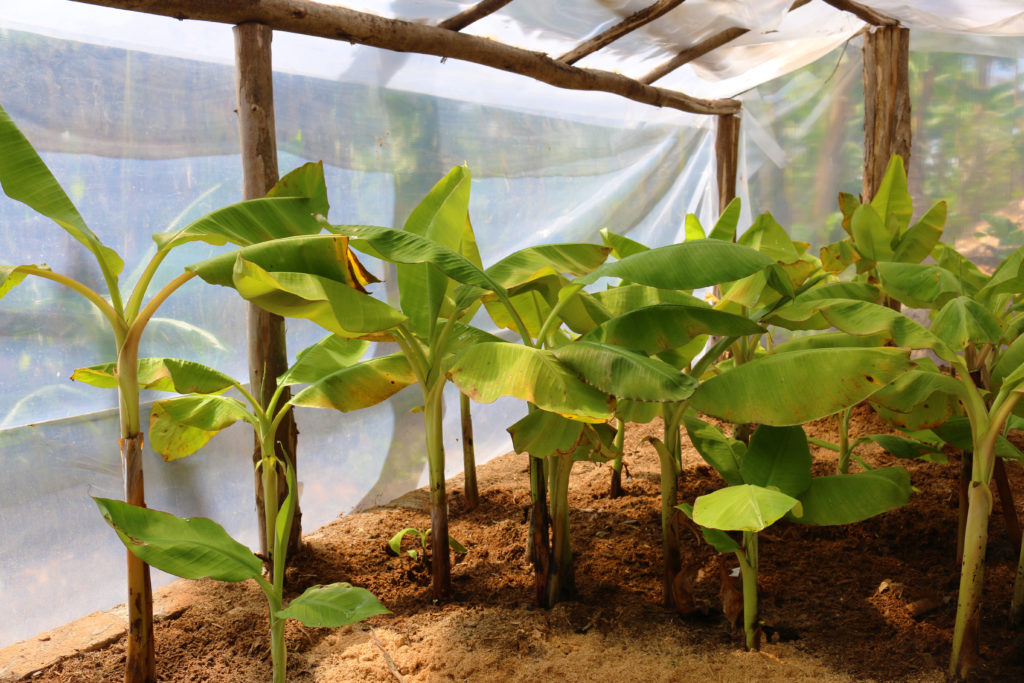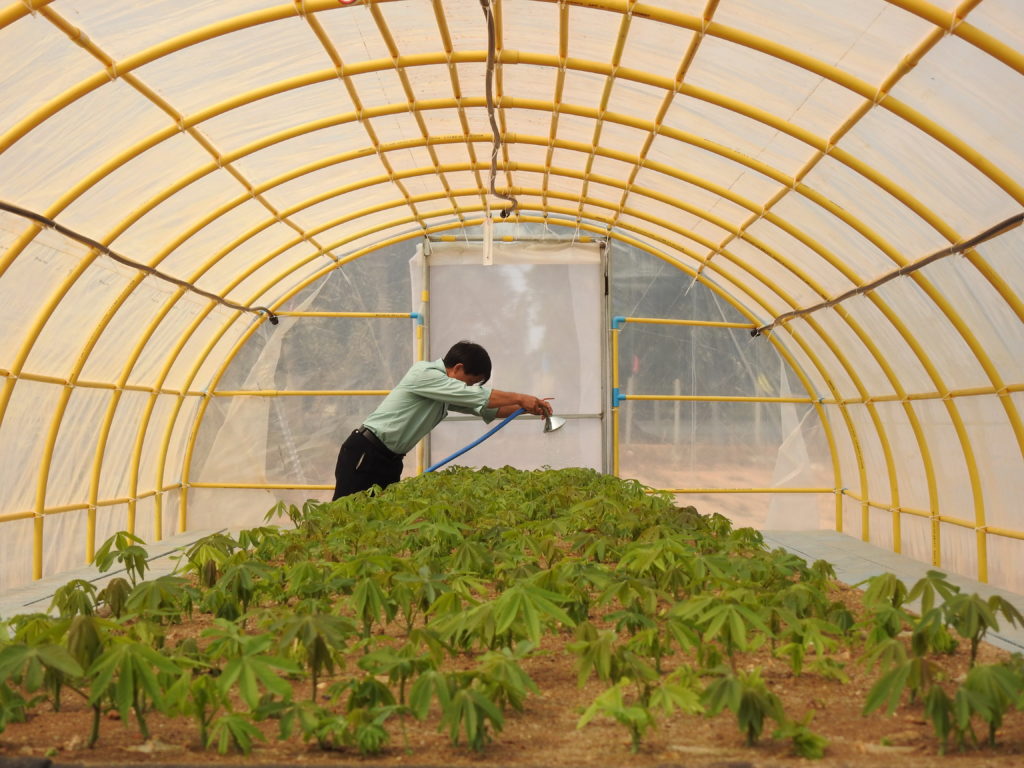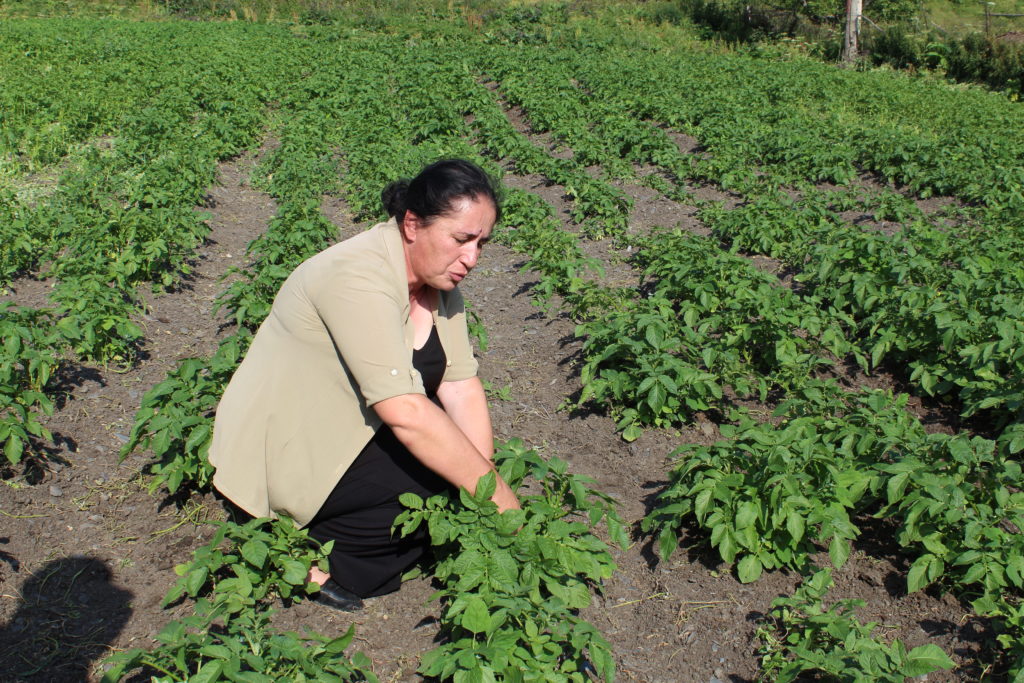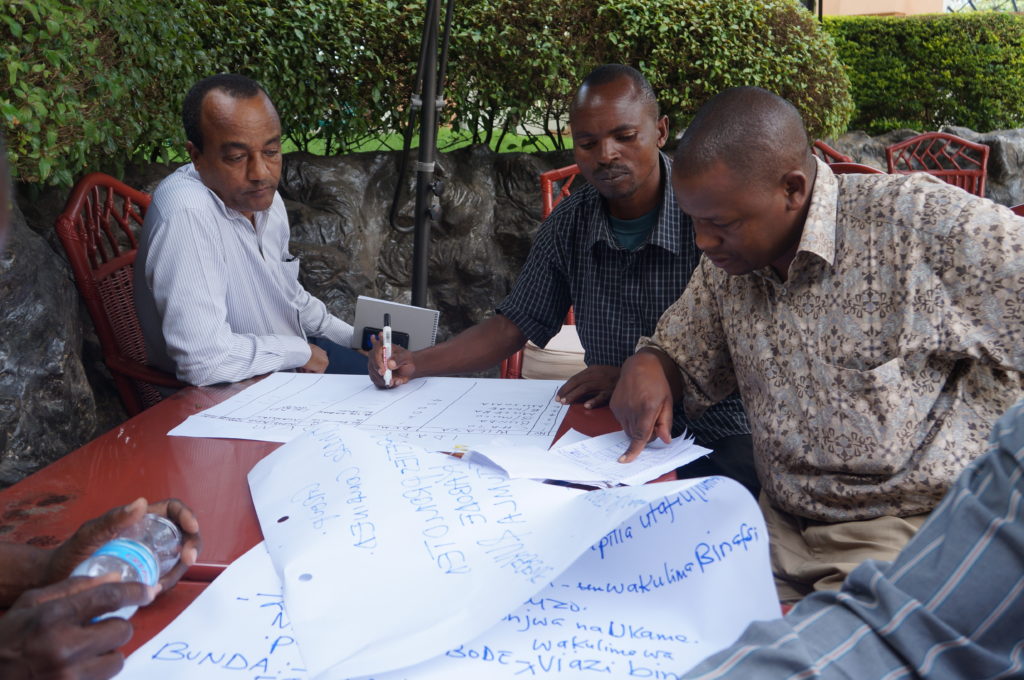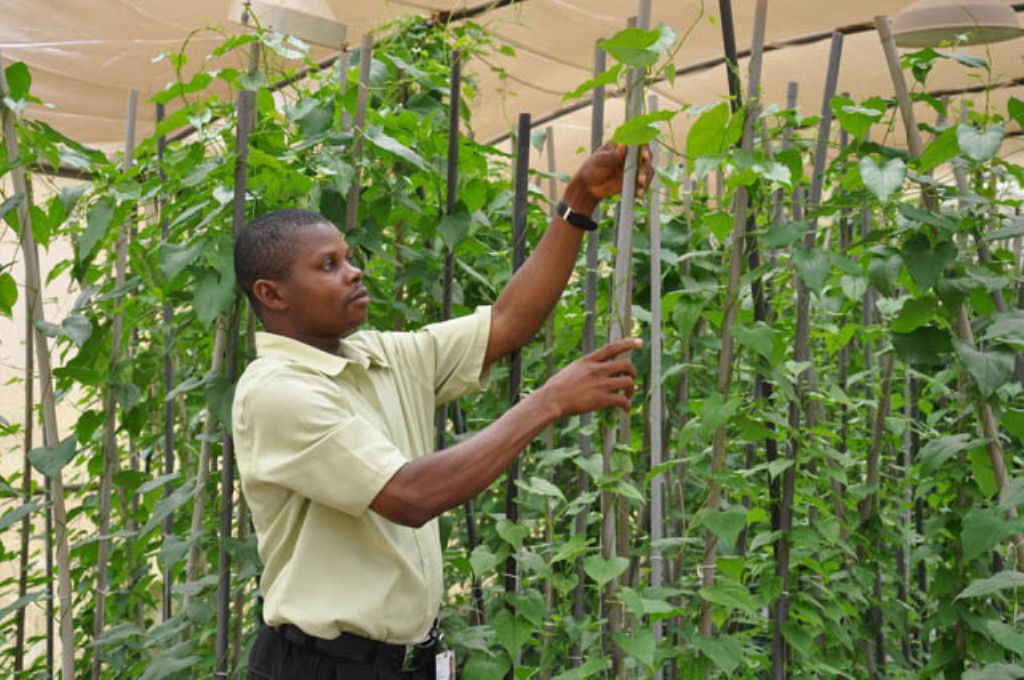The following five examples, one for each major crop of interest to RTB, describe where the tools have been used and their potential to better understand and improve seed systems:
Banana diversity in Burundi was assessed with the four-square method to show the influence of the invasive banana bunchy top disease and of the seed system interventions used to control it (Simbare et al. 2020). This enabled a discussion with farmers about the changes in the diversity of the East African Highland banana group, which was important because farmers are custodians of on-farm diversity. Farmers could also anticipate the eventual arrival of new varieties from tissue culture interventions. This study revealed the need to include a conservation objective in seed system interventions for bananas in centers of secondary diversity, providing a strong case for alternative approaches to seed quality assurance in these areas. The data from these studies are also being used to study how seed flows through the networks of seed systems. A blend of formal and informal approaches will be required to develop the banana seed system to help households improve productivity and deal with emerging challenges.
Cassava is a major crop in Southeast Asia, where the smallholders in Cambodia, Laos, Vietnam, Thailand, Indonesia, and the Philippines supply the starchy roots to multi-billion-dollar value chains. But in 2016, Sri Lankan cassava mosaic virus (SLCMV) was reported in Cambodia although it was first observed in 2015. Southeast Asia lacked resistant varieties, and the disease quickly spread via whitefly vectors and infected planting stems. Response was hampered by the lack of systematic knowledge of cassava seed networks. With a grant from the Australian Center for International Agricultural Research (ACIAR), CIAT led a study with WUR, UF, and national partners in Cambodia, Vietnam, and China to understand the movement of cassava seed, and to model spread and the impact of mitigation interventions, using a combination of seed tracing to map seed exchange networks (Delaquis et al. 2018) and impact network analysis to construct epidemiological models. This led to a large new ACIAR research project on SLCMV. The results were presented to the regional taskforces for SLCMV, providing governments and cassava value chain stakeholders with regional data and scenario analyses for planning interventions.
Potatoes are the ‘second bread’ in the Republic of Georgia. However, yield is 8.9 to 12 tons per ha, far below the potential of 50 tons per ha. One problem is poor potato seed quality. Farmers save seed tubers from one season to the next. This leads to seed degeneration, because pathogens, such as viruses and Synchytrium endobioticum (the fungus that causes potato wart), accumulate in the seed. Support from the Austrian Development Agency (ADA), allowed CIP, UF, and local partners to design an intervention to improve seed quality (https://ishpotato.cipotato.org/) and a national plan for improving seed potato (CIP 2019), based on the integrated seed health approach. As a result, hundreds of farmers adopted positive selection, a simple technique for choosing the best seed tubers. The project also identified three virus-resistant potato clones to be released as varieties and adapted international seed certification standards to Georgian conditions. The team used impact network analysis to model scenarios for the spread of potato wart and identified areas where the pathogen needed to be monitored carefully to prevent major losses (Andersen Onofre et al. 2021), building on concepts developed in a study of sweetpotato seed systems in Uganda (Andersen et al. 2019).
In sweetpotato, the multi-stakeholder framework was used in a review of the Marando Bora (Better Vines) project in Lake Zone, Tanzania (Ogero et al. Proceedings of a workshop held in Mwanza, Tanzania, 27–28 January 2015). The project had trained decentralized vine multipliers (DVMs) to multiply seed of improved varieties and distribute it through a subsidized voucher system. The multi-stakeholder framework allowed a systematic reflection from different stakeholder perspectives on the successes and challenges to improving the availability, access and quality of sweetpotato seed. The review highlighted several challenges: some varieties were susceptible to virus diseases; knowledge was lacking on seed degeneration and it was not clear when farmers should replace their seed. These issues were explored in a follow up project, Kinga Marando (Protecting Vines), which introduced an innovative disease management technology using net tunnels to protect sweetpotatoes from insects. Seed health models were then used to assess seed degeneration for two preferred varieties, with and without nets. These findings were used to explore how many seasons farmers could re-use seed before reaching an economic threshold of 40% yield loss (Ogero et al. 2019).
For yam in Nigeria, the Seed Tracker showed that seed data can be collected in real-time with an ICT (Ouma et al. 2019). Seed yam data in Nigeria is predominantly collected in field notebooks, later entered into a Microsoft Access sheet. But these data systems are slow to provide feedback, and they cannot provide data on demand, hampering the tracking of seed at various stages of crop production and management. The study gave data collectors a pre-installed Seed Tracker (ST) app for use on an Android device. This app improved the efficiency, speed, and convenience in data collection and visualization, showing that the ST can be used in crop management and research, not just with seed, and also in other vegetatively propagated crops. Receiving useful, rapid feedback was both an incentive for farmers to provide quality data and a rationale on which to base their management decisions to boost yields. Stakeholders were able to visualize trends in yam production and marketing.
WHERE WE WORK
The toolbox for working with root, tuber and banana seed systems has been used across the world. To date, fifteen countries in sub-Saharan Africa, seven countries in Southeast Asia, and four countries in North and South America have used the tools to strengthen and improve interventions in formal and informal seed systems. To date we have documented 46 Tool x Crop x Country combinations.
The interactive map and table below allow you to explore the use cases in detail.
Click and drag to move around the map, and use your mouse scroll wheel or the slider at the bottom to zoom in and out. Click on a country to isolate it, or hold ctrl + click to select multiple countries. Use the drop-down menus above to filter the results by Tool, Crop, or Country. The table on the right will update to show your selection, including clickable reference links taking you to the published article or report detailing the case. We are committed to open access science and strive to make all materials openly available to the public. If you encounter an article you cannot access, please reach out to the author or visit the Contact section of the Toolbox website.
This map will be updated as the tools are used in additional contexts.


